*NURSING > EXAM REVIEW > Chapter 15: Anxiety and Obsessive-Compulsive Disorders Halter: Varcarolis’ Foundations of Psychiat (All)
Chapter 15: Anxiety and Obsessive-Compulsive Disorders Halter: Varcarolis’ Foundations of Psychiatric Mental Health Nursing: A Clinical Approach, 8th Edition
Document Content and Description Below
1. A nurse wants to teach alternative coping strategies to a patient experiencing severe anxiety. Which action should the nurse perform first? a. Verify the patient‘s learning style. b. Lower the... patient‘s current anxiety. c. Create outcomes and a teaching plan. d. Assess how the patient uses defense mechanisms. ANS: B A patient experiencing severe anxiety has a markedly narrowed perceptual field and difficulty attending to events in the environment. A patient experiencing severe anxiety will not learn readily. Determining preferred modes of learning, devising outcomes, and constructing teaching plans are relevant to the task but are not the priority measure. The nurse has already assessed the patient‘s anxiety level. Use of defense mechanisms does not apply. PTS: 1 DIF: Cognitive Level: Analyze (Analysis) REF: Pages 15-4, 5, 64 (Table 15-1) TOP: Nursing Process: Implementation MSC: Client Needs: Psychosocial Integrity 2. A woman is 5'7", 160 lbs. and wears a size 8 shoe. She says, ―My feet are huge. I‘ve asked three orthopedists to surgically reduce my feet.‖ This person tries to buy shoes to make her feet look smaller and, in social settings, conceals both feet under a table or chair. Which health problem is likely? a. Social anxiety disorder b. Body dysmorphic disorder c. Separation anxiety disorder d. Obsessive-compulsive disorder due to a medical condition ANS: B Body dysmorphic disorder refers to a preoccupation with an imagined defect in appearance in a normal-appearing person. The patient‘s feet are proportional to the rest of the body. In obsessive-compulsive or related disorder due to a medical condition, the individual‘s symptoms of obsessions and compulsions are a direct physiological result of a medical condition. Social anxiety disorder, also called social phobia, is characterized by severe anxiety or fear provoked by exposure to a social or a performance situation that will be evaluated negatively by others. People with separation anxiety disorder exhibit developmentally inappropriate levels of concern over being away from a significant other. PTS: 1 DIF: Cognitive Level: Understand (Comprehension) REF: Pages 15-28, 29 TOP: Nursing Process: Assessment testbanks_and_xanax MSC: Client Needs: Psychosocial Integrity 3. A patient experiencing moderate anxiety says, ―I feel undone.‖ An appropriate response for the nurse would be: a. ―What would you like me to do to help you?‖ b. ―Why do you suppose you are feeling anxious?‖ c. ―I‘m not sure I understand. Give me an example.‖ d. ―You must get your feelings under control before we can continue.‖ ANS: C Increased anxiety results in scattered thoughts and an inability to articulate clearly. Clarifying helps the patient identify thoughts and feelings. Asking the patient why he or she feels anxious is nontherapeutic; the patient likely does not have an answer. The patient may be unable to determine what he or she would like the nurse to do in order to help. Telling the patient to get his or her feelings under control is a directive the patient is probably unable to accomplish. PTS: 1 DIF: Cognitive Level: Apply (Application) REF: Pages 15-39, 40, 83 (Table 15-9) TOP: Nursing Process: Implementation MSC: Client Needs: Psychosocial Integrity 4. A patient fearfully runs from chair to chair crying, ―They‘re coming! They‘re coming!‖ The patient does not follow the staff‘s directions or respond to verbal interventions. The initial nursing intervention of highest priority is to a. provide for the patient‘s safety. b. encourage clarification of feelings. c. respect the patient‘s personal space. d. offer an outlet for the patient‘s energy. ANS: A Safety is of highest priority because the patient experiencing panic is at high risk for selfinjury related to increased non-goal-directed motor activity, distorted perceptions, and disordered thoughts. Offering an outlet for the patient‘s energy can occur when the current panic level subsides. Respecting the patient‘s personal space is a lower priority than safety. Clarification of feelings cannot take place until the level of anxiety is lowered. PTS: 1 DIF: Cognitive Level: Analyze (Analysis) REF: Pages 15-18, 40, 72 (Table 15-4) TOP: Nursing Process: Planning MSC: Client Needs: Safe, Effective Care Environment 5. A patient fearfully runs from chair to chair crying, ―They‘re coming! They‘re coming!‖ The patient does not follow the staff‘s directions or respond to verbal interventions. Which nursing diagnosis has the highest priority? a. Fear b. Risk for injury c. Self-care deficit d. Disturbed thought processes ANS: B testbanks_and_xanax A patient experiencing panic-level anxiety is at high risk for injury related to increased nongoal-directed motor activity, distorted perceptions, and disordered thoughts. Data are not present to support a nursing diagnosis of self-care deficit or disturbed thought processes. The patient may have fear, but the risk for injury has a higher priority. PTS: 1 DIF: Cognitive Level: Analyze (Analysis) REF: Pages 15-40, 81 (Table 15-8), 85 (Table 15-10) TOP: Nursing Process: Diagnosis/Analysis MSC: Client Needs: Safe, Effective Care Environment 6. A patient checks and rechecks electrical cords related to an obsessive thought that the house may burn down. The nurse and patient explore the likelihood of an actual fire. The patient states this event is not likely. This counseling demonstrates principles of a. flooding. b. desensitization. c. relaxation technique. d. cognitive restructuring. ANS: D Cognitive restructuring involves the patient in testing automatic thoughts and drawing new conclusions. Desensitization involves graduated exposure to a feared object. Relaxation training teaches the patient to produce the opposite of the stress response. Flooding exposes the patient to a large amount of an undesirable stimulus in an effort to extinguish the anxiety response. PTS: 1 DIF: Cognitive Level: Understand (Comprehension) REF: Pages 15-51, 52, 72 (Table 15-4) TOP: Nursing Process: Implementation MSC: Client Needs: Psychosocial Integrity 7. A patient undergoing diagnostic tests says, ―Nothing is wrong with me except a stubborn chest cold.‖ The spouse reports the patient smokes, coughs daily, lost 15 pounds, and is easily fatigued. Which defense mechanism is the patient using? a. Displacement b. Regression c. Projection d. Denial ANS: D Denial is an unconscious blocking of threatening or painful information or feelings. Regression involves using behaviors appropriate at an earlier stage of psychosexual development. Displacement shifts feelings to a more neutral person or object. Projection attributes one‘s own unacceptable thoughts or feelings to another. PTS: 1 DIF: Cognitive Level: Understand (Comprehension) REF: Pages 15-11, 12, 66 (Table 15-2) TOP: Nursing Process: Assessment MSC: Client Needs: Psychosocial Integrity 8. A patient with an abdominal mass is scheduled for a biopsy. The patient has difficulty understanding the nurse‘s comments and asks, ―What do you mean? What are they going to testbanks_and_xanax do?‖ Assessment findings include tremulous voice, respirations 28, and pulse 110. What is the patient‘s level of anxiety? a. Mild b. Moderate c. Severe d. Panic ANS: B Moderate anxiety causes the individual to grasp less information and reduces problem-solving ability to a less-than-optimal level. Mild anxiety heightens attention and enhances problem solving. Severe anxiety causes great reduction in the perceptual field. Panic-level anxiety results in disorganized behavior. PTS: 1 DIF: Cognitive Level: Understand (Comprehension) REF: Pages 15-4, 5, 64 (Table 15-1) TOP: Nursing Process: Assessment MSC: Client Needs: Physiological Integrity 9. A patient preparing for surgery has moderate anxiety and is unable to understand preoperative information. Which nursing intervention is most appropriate? a. Reassure the patient that all nurses are skilled in providing postoperative care. b. Present the information again in a calm manner using simple language. c. Tell the patient that staff is prepared to promote recovery. d. Encourage the patient to express feelings to family. ANS: B Giving information in a calm, simple manner will help the patient grasp the important facts. Introducing extraneous topics as described in the distracters will further scatter the patient‘s attention. PTS: 1 DIF: Cognitive Level: Apply (Application) REF: Pages 15-39, 40 (Table 15-9) TOP: Nursing Process: Implementation MSC: Client Needs: Psychosocial Integrity 10. A patient is experiencing moderate anxiety. The nurse encourages the patient to talk about feelings and concerns. What is the rationale for this intervention? a. Offering hope allays and defuses the patient‘s anxiety. b. Concerns stated aloud become less overwhelming and help problem solving begin. c. Anxiety is reduced by focusing on and validating what is occurring in the environment. d. Encouraging patients to explore alternatives increases the sense of control and lessens anxiety. ANS: B All principles listed are valid, but the only rationale directly related to the intervention of assisting the patient to talk about feelings and concerns is the one that states that concerns spoken aloud become less overwhelming and help problem solving begin. [Show More]
Last updated: 1 year ago
Preview 1 out of 14 pages
.png)
Reviews( 0 )
Document information
Connected school, study & course
About the document
Uploaded On
May 04, 2021
Number of pages
14
Written in
Additional information
This document has been written for:
Uploaded
May 04, 2021
Downloads
0
Views
46
.png)

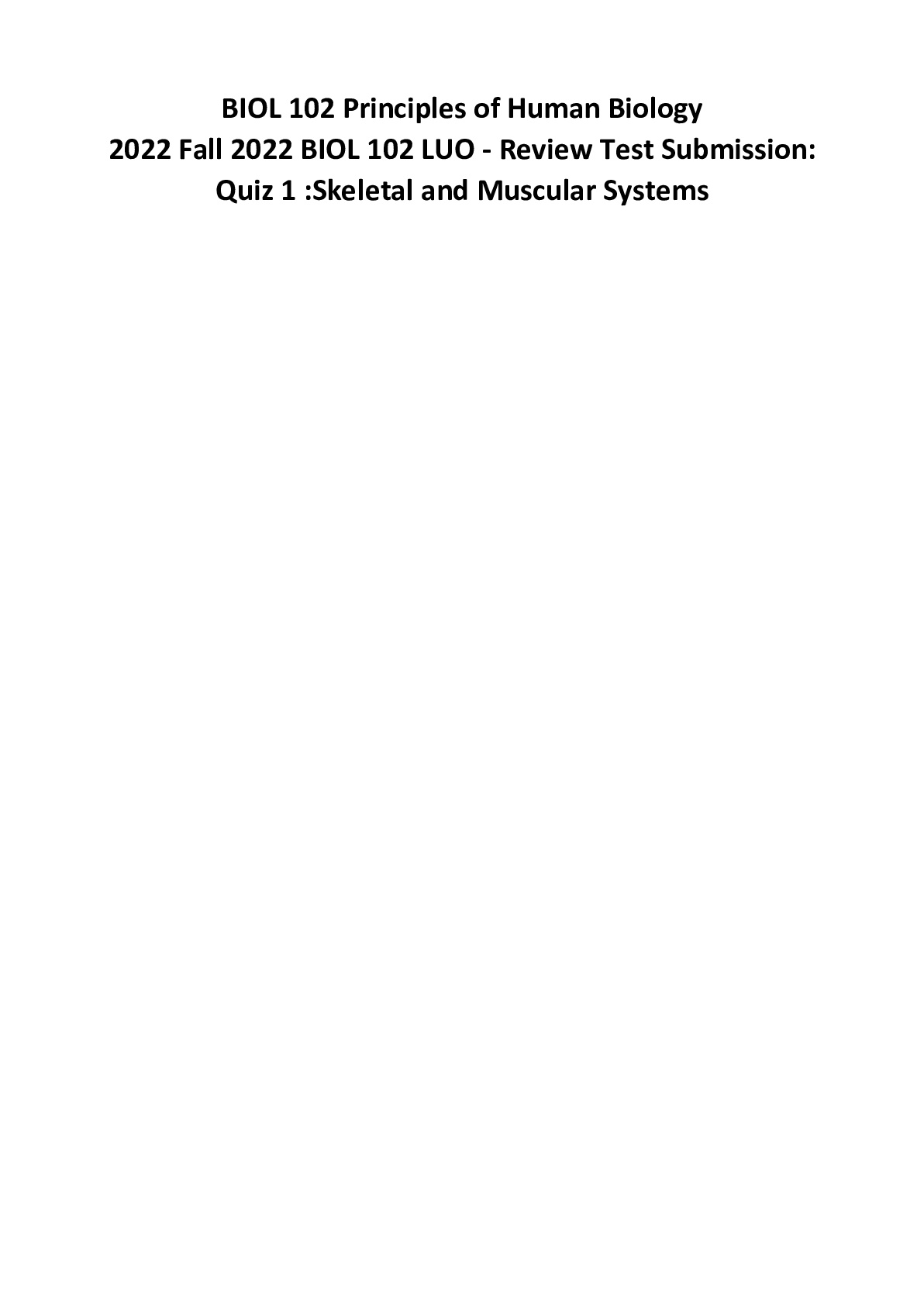
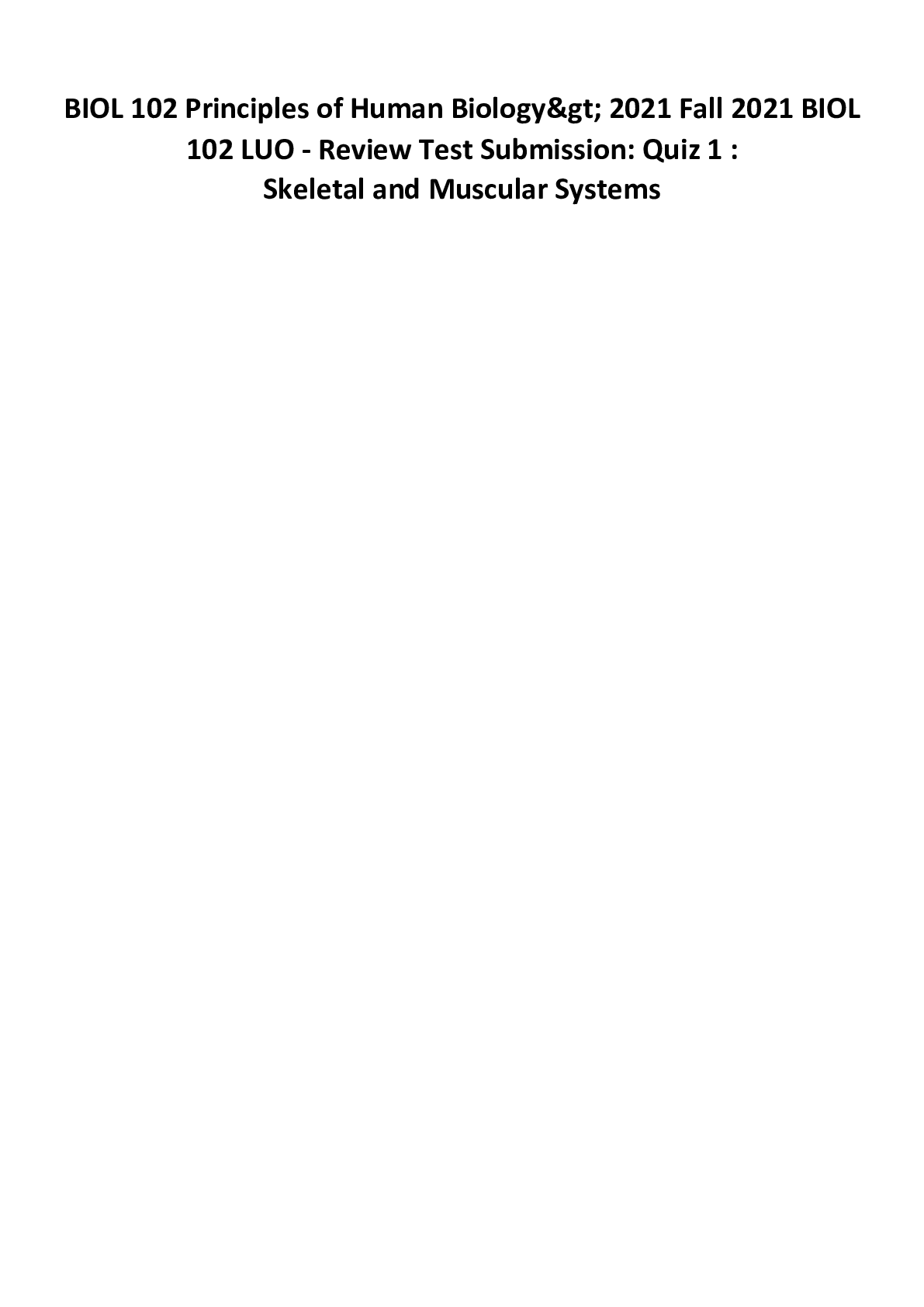
.png)

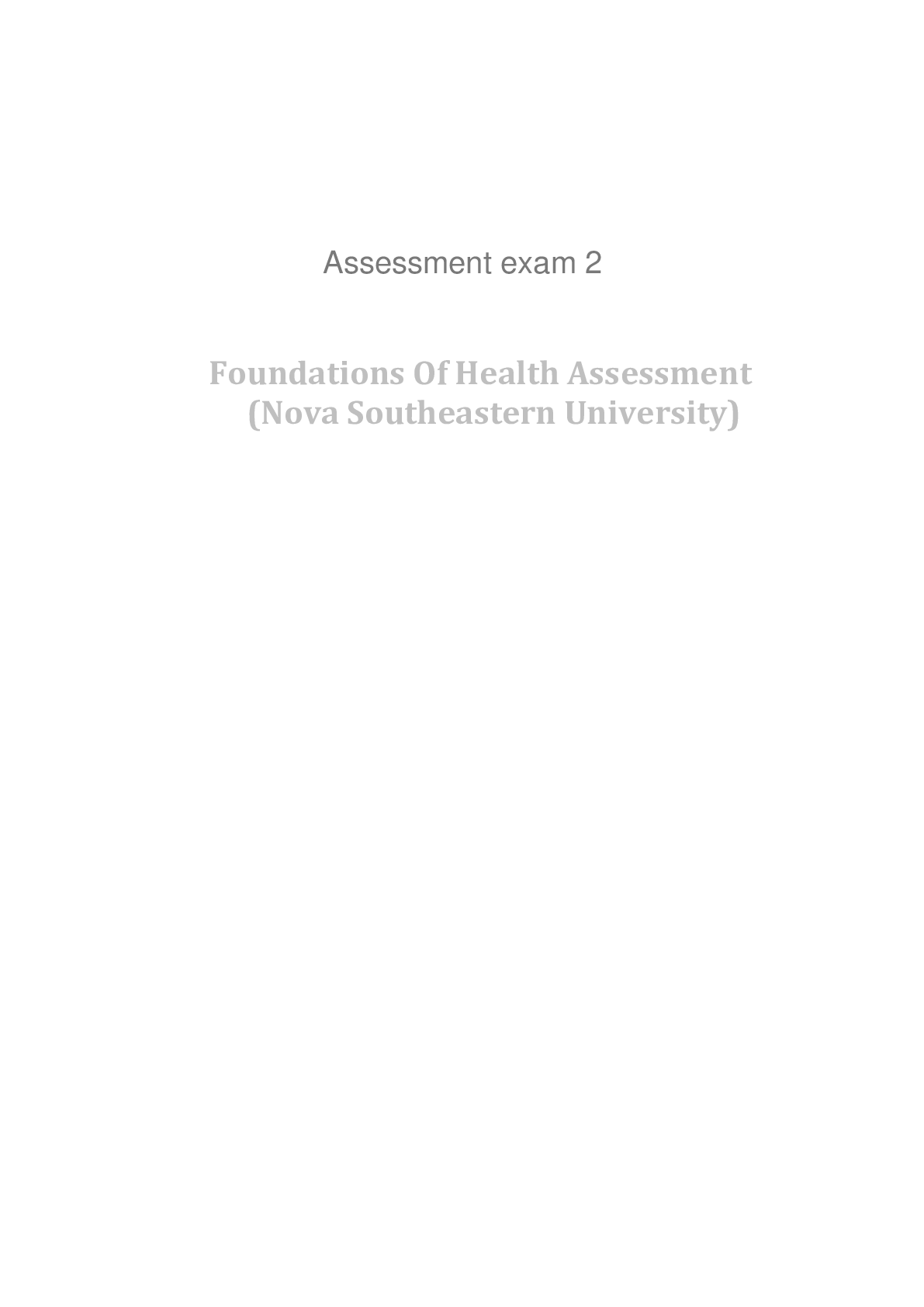
.png)
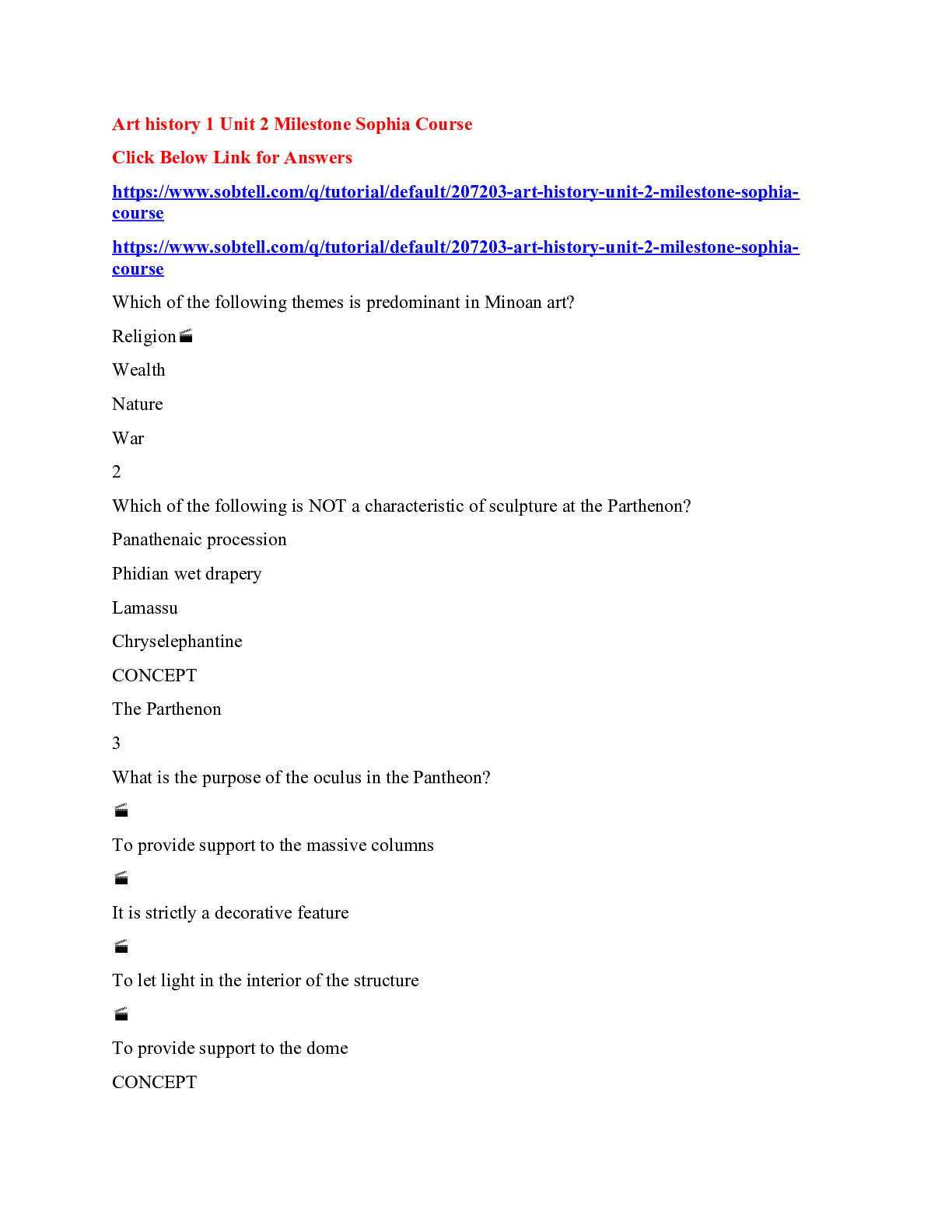




.png)
.png)


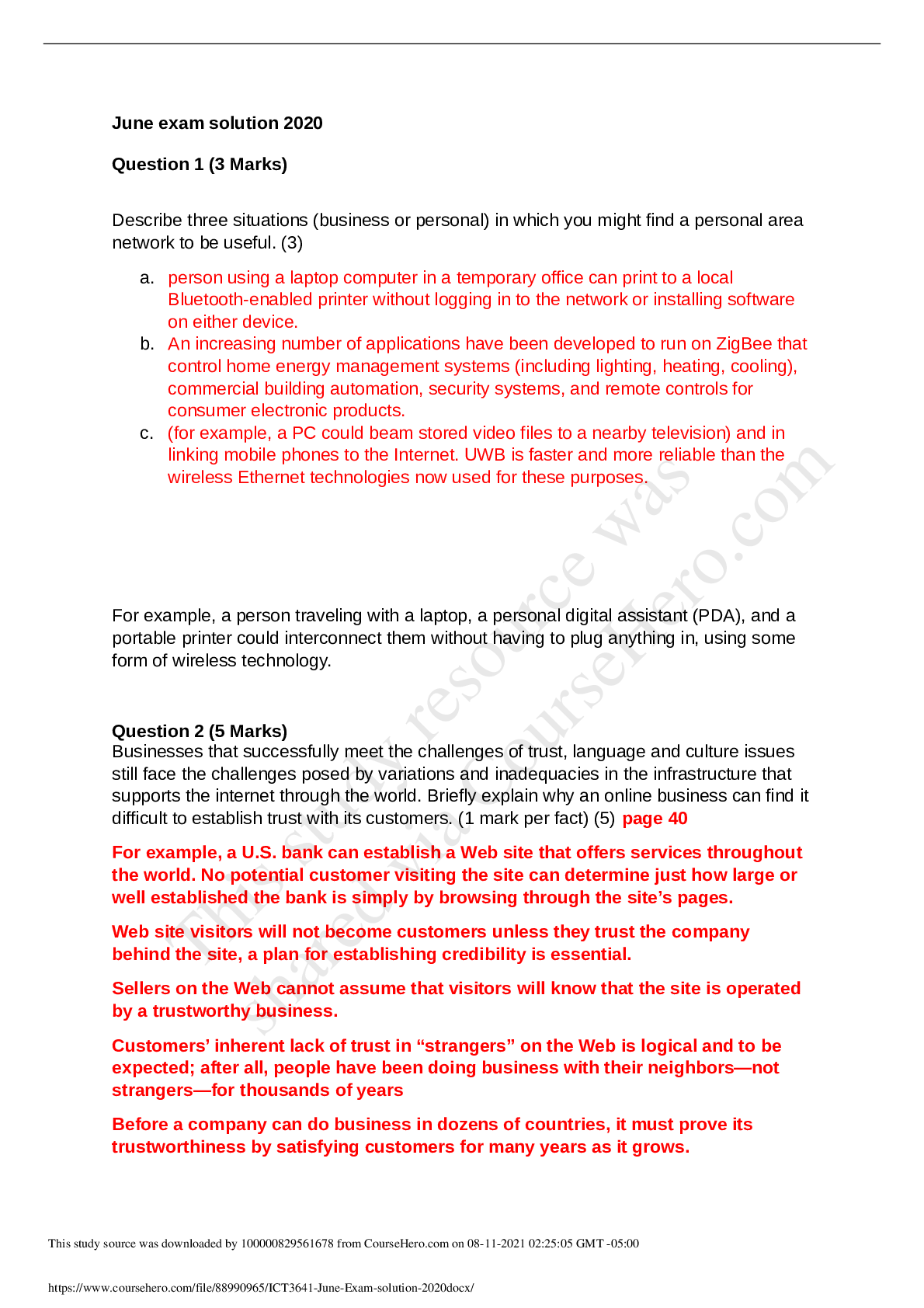
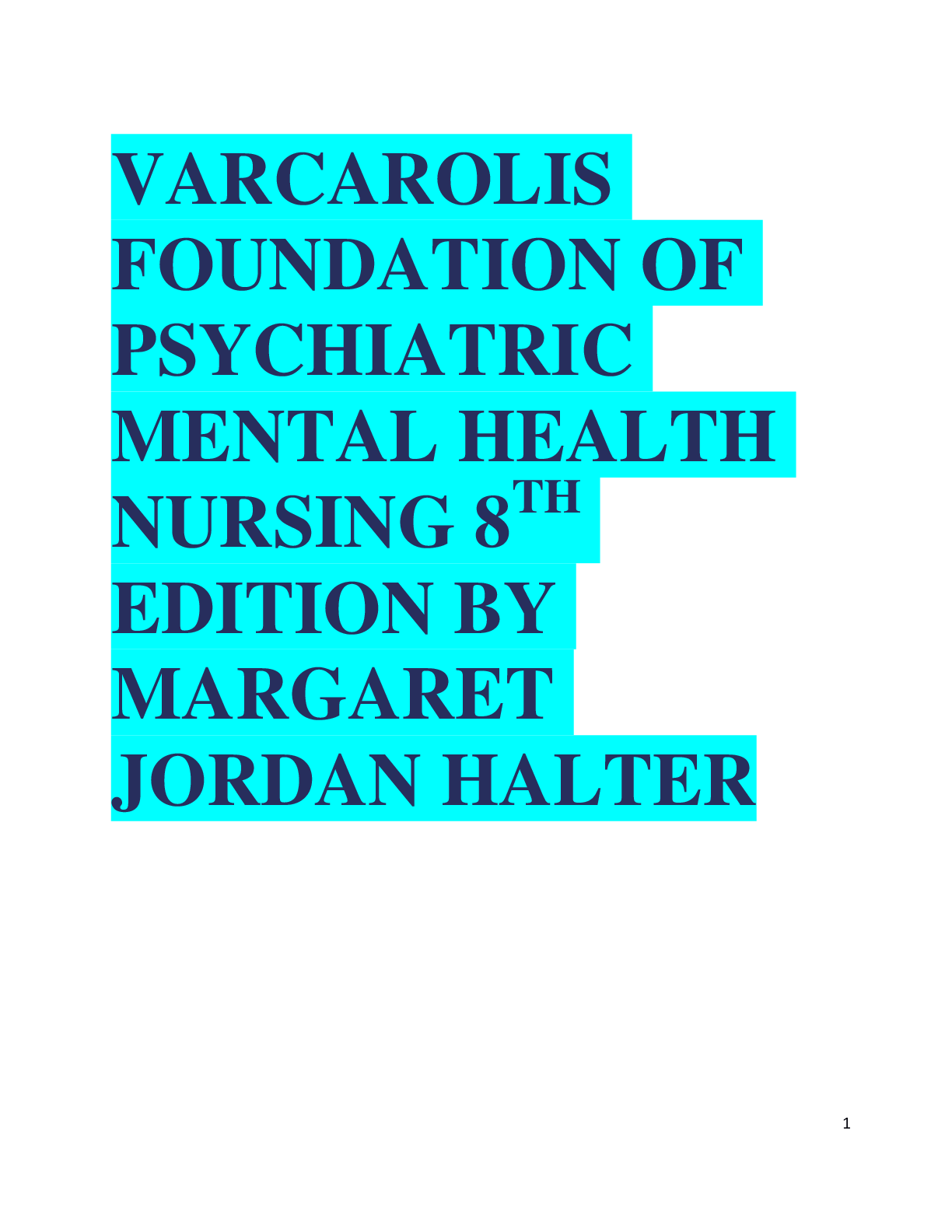

.png)
.png)
.png)
.png)
.png)
.png)
.png)
.png)
.png)
.png)
.png)
.png)
.png)
.png)
.png)
.png)

